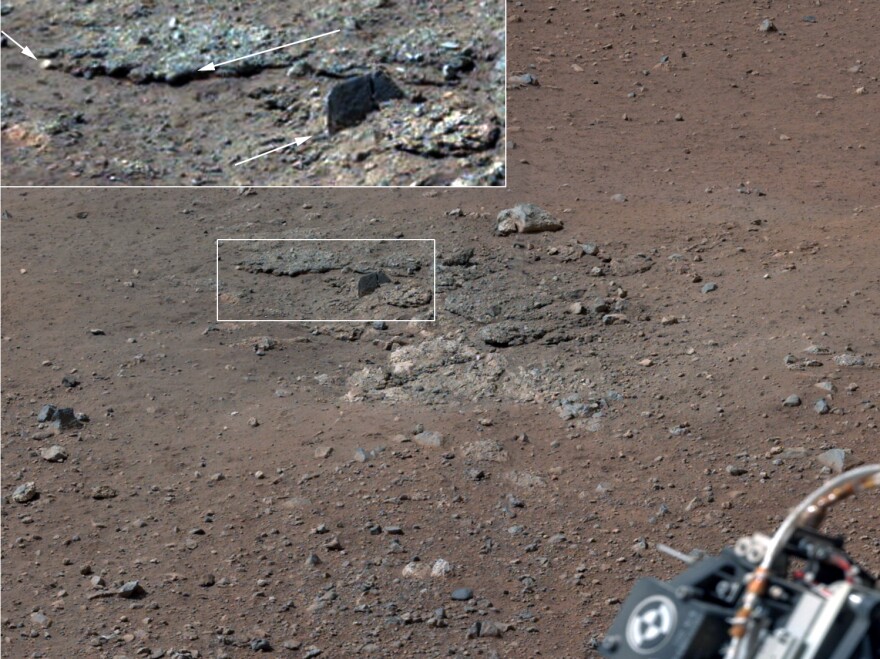NASA has released two more pictures from the Curiosity Mars rover.
One is a color image that shows that wall of the Gale Crater and the other is a close up shot of the area excavated by the rover's descent stage rocket engines.
We've posted the white-balanced version of the photos. In theory those should appear more like what Mars would look like if you were using your eyes.

/ NASA/JPL-Caltech/MSSS
/
NASA/JPL-Caltech/MSSS
Also of note: The Wall Street Journal has started stringing together a 360-degree view of the place where Curiosity landed. It's still incomplete, but the paper is adding photos as they come in.
Copyright 2021 NPR. To see more, visit https://www.npr.org.




